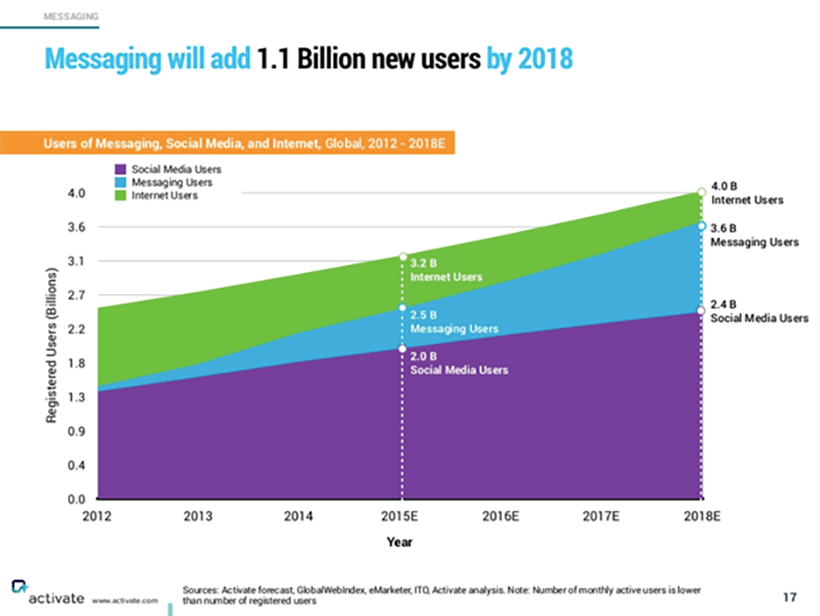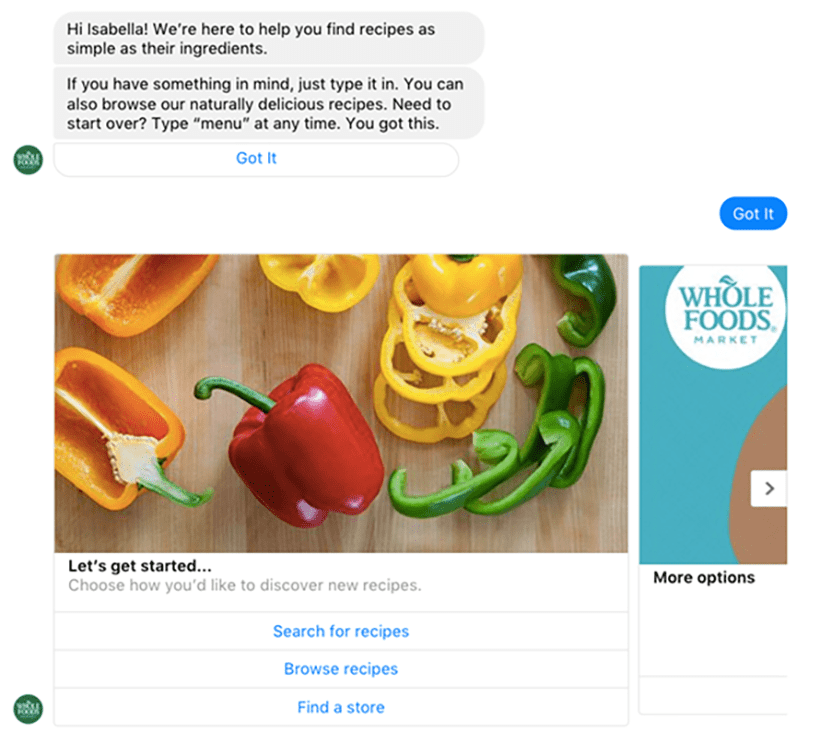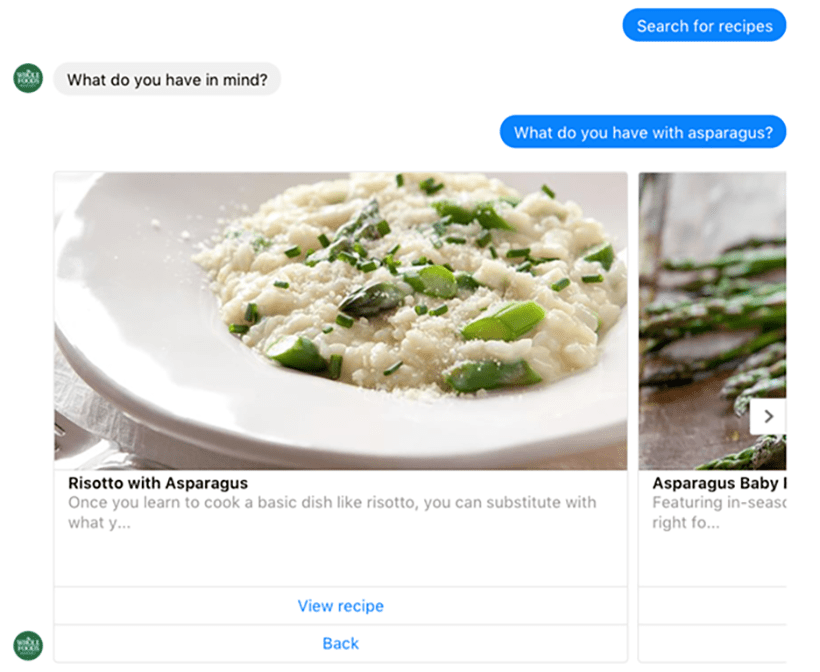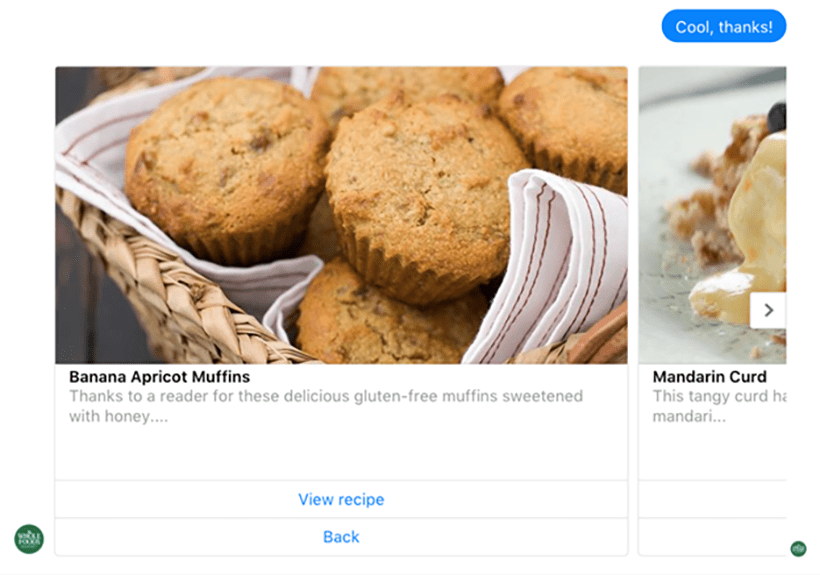Introduction
Now that 2017 is out of the picture, what can we expect customer service to look like in 2018?
The question isn’t new – after all, customer service is always changing. As each year comes to a close, thought leaders and customer experience experts rush to offer insight on how these changes will manifest themselves in the coming months – and whether nor not they’ll leave a lasting impact on the industry.
While shifts in customer service trends tend to happen gradually, by keeping an eye on what is changing – and what is staying the same – your business will always be up to date on the latest industry developments. Use this list of 2018 customer service and business trends to plan your customer experience strategy for the new year, and to stay one step ahead of the competition.
A Friction-less Experience Will Be Mandatory
Customer advocates and thought leaders agree: providing a friction-less experience for customers is moving from novelty to mandatory. That is why reducing customer effort was voted the number one priority for contact centers in 2018.
This statistic comes from CCW Digital’s latest Winter Executive Report – a report that analyzes the customer service priorities of several organizations to discover the most popular goals and strategies for call centers in 2018. What they found was that companies across industries are moving to incorporate a friction-less experience as a central part of their customer service strategy (and it’s not just talk – they plan on investing accordingly).
Recommended for you: Is Your Contact Center Ready for the New Year? Set Your 2018 Business Priorities with CCW Digital’s Winter Report.
There are several ways that companies intend to reduce friction for customers, and; one of those ways is by through reducing friction for agents. Many businesses believe that the key to the customer experience lies in the quality of the agent experience. That’s why in 2018, companies will look to create a frictionless customer experience by better empowering agents to do their jobs.
According to CCW Digital’s Report, 61% of companies agree that agent coaching is a top investment priority for 2018. Other agent investment priorities include training (as listed by 57% of companies surveyed), quality monitoring and management (54%), dashboards (53%) and scheduling and forecasting (50%). By empowering agents and removing friction from their daily lives, companies hope to give agents access to the knowledge, customer data, and systems facility that they need to successfully do their jobs and, as a result, remove friction from the customer experience.
Improving the agent experience isn’t the only way that companies are looking to remove friction from the customer experience. Companies also plan on achieving this top priority for 2018 by creating or optimizing automated self-service experiences (such as through intelligent customer knowledge bases and Chatbots), and improving customer journey mapping. By empowering customers and making strides to better understand them, companies will continue to switch from a transactional approach to the customer experience to a relationship-driven one in 2018 – creating a more valuable experience for customers everywhere.
Get Onboard:
- Customers will be more intolerant of friction than ever in 2018, and many will switch to a competitor if they can provide a more frictionless experience. Practice customer journey mapping to see where in their journey your customers are coming across friction. By finding and examining customer pain points, you can begin to remedy them and remove snags from the buying process, establishing more efficient systems and increasing customer satisfaction.
- Customers aren’t the only ones who experience pain points. Remove agent pain points by collecting feedback to see what systems could be improved so that agents will come across less friction when serving customers.
Recommended for you: [eBook] Improve Your Customer Experience: An Action Plan for CX Success.
Social Messaging Will Gain Renewed Importance
Facebook is making a big change: they are changing their algorithm to share more personal content rather than posts from businesses or news outlets. Mark Zuckerberg, the founder of the social media giant, explains that passively consuming information on social media can have negative health consequences for users, and that Facebook will be making the switch “from focusing on helping you find relevant content to helping you have more meaningful social interactions.”
Zuckerberg is forthcoming about the effect that this will have on businesses: “As we roll this out, you’ll see less public content like posts from businesses, brands, and media. And the public content you see more will be held to the same standard — it should encourage meaningful interactions between people.” In other words, organic reach for businesses – which has been in decline for years – is going to take another major hit. To reach customers in 2018, companies are now either going to have to pay for visibility, partner up with influencers, or encourage very meaningful engagement. Experts predict that the impacts of this algorithm could soon spread to Instagram – which is owned by Facebook – as well.
Despite all these changes, one area where businesses haven’t suffered is social messaging. Today, more than 2 billion messages are sent between people and businesses every month on Facebook’s Messenger app – both automated and people-initiated. And WhatsApp, one of the world’s most popular messaging apps, is currently exploring ways to help companies and customers connect by testing new business tools that will fulfill the needs of small businesses and enterprises.
The fact that messaging is gaining importance for businesses is no small prize. As Zuckerberg explained back in 2014, “Messaging is one of the few things that people do more than social networking.” And that has held true over the years. Activate, a strategy and technology consulting firm, predicted that by 2018 there would be 3.6 billion messaging users worldwide – about 1.5 times the amount of people using social media.
Source: Activate
The decline of organic social media reach coupled with the increase in users on messaging platforms makes 2018 the year to pick up social messaging. Already, customer engagement software providers like Comm100 are beginning to integrate social media messaging with their existing interfaces to give businesses easy access to this important channel. Advances in messaging, such as WhatsApp’s up-and-coming developments and the rise of social media Chatbots also make it easier than ever for businesses to serve their customers through this platform.
There are other implications to this new customer service trend. In 2018, companies will start thinking outside of their traditional one-to-many marketing strategy, and begin considering how they can market to customers while serving them one-on-one.
For example, Whole Foods’ Chatbot on Facebook Messenger helps visitors find recipes. This serves as both a customer service strategy and a marketing strategy (recipe suggestions send potential buyers to Whole Foods’ website, and encourage them to begin planning a shopping list with these recipes in mind).
Source: Whole Foods Facebook
Another example is Adidas’s Tango Squad. The Tango Squad is a community of hyper-connected teenage soccer fans operating on direct messenger apps – namely WhatsApp. Adidas shares exclusive content and perks with its Tango Squad members, creating loyal customers who become highly vocal brand advocates and grassroots influencers.
Get Onboard:
- Pick the messaging platform where your customers are, and establish a presence for your business.
- Adopt a customer service solution that takes care of social messaging in the same console as your live chat, or at least ensure that your social media is in part owned by your customer service team to ensure quality customer care over messaging apps.
- When using a messaging platform, treat your messenger strategy like how you treat your content marketing: Selling shouldn’t be your primary objective, but you can use content to send users to your site.
- Adopt Facebook messenger bots and include browsing menus if possible. This makes it easier for users to find content they’re interested in, even if they don’t know exactly what they’re looking for yet.
- Get creative: How can you use messaging platforms to reach both your customer service and your marketing goals?
AI and Human Customer Service Will Be More Integrated Than Ever
Chatbots aren’t replacing humans anytime soon. However, artificial intelligence (AI) is becoming an increasingly affordable asset for companies.
Over the years, AI has found its way into live chat, social media messaging, knowledge base systems, and more. But, as we explored in last year’s post about customer service trends, Chatbots aren’t perfect. For a recent, every-day example of this, look no further than how my conversation with Whole Foods’ Facebook Messenger Chatbot continued:
Source: Whole Foods Facebook
(Here, I was just trying to tell the bot thank you, but it came back with a few recipes that had the word “thanks” in the description.)
In 2018, bot adoption won’t slow down. Businesses will continue to take on high-performing bots that get smarter with each interaction, and that can help customers with simple inquiries. However, companies will have to manage their expectations of bots if they want them to succeed. If a bot cannot answer an inquiry, then an agent must be able to easily take over, so as not to sacrifice service quality or create friction for the customer.
But it’s not just about establishing a seamless transition from bot to agent – in 2018, Chatbots and agents will work more closely together than ever to serve customers. In an interview with Business Insider, Kemal El Moujahid, Director of Product Management in AI and Messaging at Facebook, expresses his optimism regarding this trend: “We have a lot of potential to make [AI] seamless, either by making the process smooth, or by providing humans powers like quick replies.”
El Moujahid touches on a shift in understanding of how AI can impact the customer experience: Recently, businesses have begun to consider not only AI’s potential to support the customer, but also its potential to deliver quality assistance by supporting the agent. For example, an AI system designed to support the agent might “listen” in on the conversation between the agent and the customer, and automatically give the agent access to resources such as canned messages or account information to help them handle the customer’s queries.
Experts like Ginni Rometty, CEO of IBM, have a different name for this kind of seamless fusion of bot and agent service – IA, or Intelligent Assistant. An IA system removes the bot as the middle man, and gives it the role of hidden assistant instead. By acting as a knowledge base for customer service agents, IA can reduce handle time and help the agent deliver faster, more reliable service.
This union between agents and bots in 2018 is good news for customer service. Bots make agents more efficient, and can be especially helpful for new agents who otherwise might have to ask a supervisor for help when handling a question they don’t know the answer to might not yet know the answers to common customer queries. And agents can navigate the nuances of human inquiry and interaction better than bots can. They can check information for relevance before using a bot’s suggestion, therefore sparing the customer from the annoying dilemma of being trapped in a correspondence with a bot who cannot help them.
Get Onboard:
- Check out IA options for your customer service team. How can you use IA and Chatbots to directly support the agents?
- To err is human… and machine. If you use IA to support your customer service team, make sure that your agents are checking what the smart knowledge base is giving them before sending incorrect messages to customers.
- Whether or not you have IA systems supporting your team, AI can still be a good tool for handling your customers’ basic queries. Just remember that if you are using AI systems such as Chatbots to connect with customers, there needs to be a quick and natural way for customers to switch between Chatbots and a live chat agent – otherwise, you risk the online version of a customer who is trapped on the phone screaming at the machine automated voice to speak to a representative.
…As Will Virtual and Brick-And-Mortar Experiences.
Amazon recently made the move to expand into brick-and-mortar stores with its 13.7 billion dollar acquisition of Whole Foods and its successful launching of the company’s “store of the future,” Amazon Go.
Meanwhile, brick-and-mortar stores are moving online. What was once physical is now virtual – even cryptocurrency such as Bitcoin is gaining mainstream support and making its way into the national dialogue (experts say that the cryptocurrency market could hit one trillion dollars in 2018).
Virtual and non-virtual spaces are merging. In customer service, video and audio chat platforms are melding the face-to-face experience of speaking with a representative (such as what would happen at a brick-and-mortar store) with the personalized experience of online chat (where the rep already has visitor information data on-hand). Even Walmart are is exploring how to integrate virtual reality into its shopping experiences, causing further interweaving of the real and the virtual.
In 2018, customer service will see physical and virtual service become more intertwined. As Customer Experience Expert and thought leader, Shep Hyken says, “This is good for the consumer. Everyone will be more competitive than ever before as they figure out how to compete, stay alive, and even thrive in an ever-changing economy fueled by customer service and convenience.” Just make sure your business is ready.
Get Onboard:
- More than anything, customers appreciate the fusing of virtual and physical spaces for the convenience. That’s also why customers enjoy audio and video chat – they get to enjoy a deeply human face-to-face service experience anytime, anywhere that suits them. Adopt video and audio chat to take your business forward into 2018, and capitalize on this trend.
- Ask yourself the following: In what other ways can you optimize your customer experience for the evolving world? What can you switch to digital that you haven’t? Like Amazon, where can you create additional speed and convenience for your customer?
Businesses Will Move Towards a Channel-less Experience
Shep Hyken confesses that he’s tired of the words multichannel and omnichannel support – and he’s not alone. These terms are both about improving the customer experience by moving customers seamlessly across channels, and ensuring that wherever customers go, their information goes with them.
This isn’t novelty – customers nowadays expect to be able to connect with their favorite brands across channels. For years now, companies have been adding channels in hopes of delivering more complete, accessible support to customers, and marketing to them across platforms.
Hyken’s beef with multichannel and omnichannel support is that the buzz surrounding them has been largely about the importance of adding more channels. In 2018, the focus for many companies will switch from adding channels (assuming that they already have a presence on important virtual channels such as live chat and social media) to optimizing the ones that they have.
As this happens, channels will begin to blend together. According to Marketing and Revenue Expert, Scott Horn: “Companies will do a better job of choreographing a consumer’s experience within and across channel pairs, such as chatbot to live chat.”
And pairing is just the start. Hyken expects that in the end, “There may be three or four channels that blend together.” He refers to this as going “channel-less.”
“In the end, the customer doesn’t care about how many channels you make available to them,” Hyken says. “They just want to buy the way they want to buy, have their questions answered, their problems solved and their comments acknowledged. It doesn’t matter what channel. So, why do we keep talking about different channels? It’s really about connecting and responding to the customer.”
Channel-less is not only better for the customer, it’s also an easier concept for companies to grasp. It’s about de-emphasizing channels for the sake of refocusing on the customer. For instance, Amazon Go’s business plan is a great example of a friction-less, channel-less purchasing experience for customers.
A channel-less experience is just as important for agents as it is for customers. According to CCW Digital’s Winter Executive Report, 40% of companies vow to work on integrating channels for the sake of the agent experience. Customers hate having to repeat themselves as they move between channels, and agents hate having to gather relevant information from irritated customers. With a channel-less experience, agents have all the information they need to assist customers in one place that they need in one place, and can use it to offer customers better support – independent of channels without worrying about the channel.
Get Onboard:
Make sure that your company is at a minimum on the channels that your customers are on – at most, establish a presence on all available channels. Then, see in what ways you can begin to blend those channels together and shift the focus from the channels to the customer.
Cyber Security Will Continue to Be a Concern
As virtual and physical worlds collide, customer information is becoming more valuable – and increasingly insecure. Information that many customers didn’t even know was available to corporations has been made vulnerable through security breaches.
In 2017, the world saw several major breaches that highlighted the need for more secure storage and handling of customer information. For Americans and Canadians, one of those instances was the Equifax breach, where a data breach at the credit reporting agency compromised the information of over 145 million Americans and 19,000 Canadians. Another shocking example was when Aetna accidentally exposed the HIV status of about 12,000 customers by sending them letters where confidential information was visible through the envelope window.
Tema Frank, Customer Experience Expert and author of PeopleShock: The Path to Profits When Customers Rule, predicts that 2018 will see more of these breaches. “There will be more big data security breaches,” she writes. “Lots of ’em. People will wring their hands and talk about how important it is to do better, but little will actually happen to stop data breaches. Companies will still be reluctant to invest in the necessary tools and training to lower risks significantly. It will be easier to just cross their fingers and hope they won’t be hit.”
Frank admits that her prediction is less than optimistic – but stands by its refreshing honesty.
So, what does this mean for customer service? The answer is everything. Protecting customer information is a vital part of serving them. Unless you’re interested in having a PR crisis on your hands, or dealing with contact lines that are flooded by angry, breached customers, we suggest you do the following.
[hihglight]Get Onboard:
- Invest in the necessary tools and training to lower risks of data breaches. That includes customer service equipment that meets top security standards. This is especially important for live chat software, and any other customer engagement software that gathers and stores confidential customer information.
- For top security, make sure that your live chat provider is ISO 27001 Certified. Comm100 is one of the only live chat providers that has met this international information management and security standard.[/highlight]
Helpful Content Will Drive Clicks and Empower Customers
The idea of content as a PR and outreach tool has grown in popularity over the last few years. We are listing it as a 2018 customer service trend because this year, producing quality content will be the key to a successful online strategy.
Quality content on your website can help lighten queues and alleviate pressure on your customer service agents. Successful knowledge bases and online communities can empower customers by helping them find the answers to their own questions.
Content can also double as an effective marketing strategy. Often when customers have a problem, they consult the internet giant, Google, for a solution. By writing practical content and peppering it with SEO-friendly keywords, potential buyers will be able to find your website while navigating the internet (according to Marketing Sherpa, content creation ranks as the single most effective SEO technique).
Good content drives brand awareness and establishes your company as an industry expert – but that isn’t the only reason why content should be part of your online strategy for 2018. According to a Roper Survey, 80% of business decision-makers prefer to get company information in a series of articles versus an advertisement.
Consider the changes that Facebook is rolling out in 2018. Businesses are fading from their customers’ timelines, and there are only a few ways to stay there (hint: except for paid Facebook advertising, all of these strategies have to do with content).
Businesses can encourage customers to go to their Facebook page and click “See First” under the “Following” options tab. Whether customers do this will be based on whether or not those businesses offer interesting content (interesting content is one of the top 3 reasons why users follow brands on social media).
Marketing Expert and Forbes Contributor Keenan Beasley said it best: “What’s bad for business is good for influencers.” Influencer marketing on the rise, and social influencers will be vital to the visibility of companies in 2018. Since influencers are people first and brands second, they aren’t restricted by algorithms, meaning that they can reach and connect with customers in ways that companies can’t. Whether you are paying influencers to share your content or just praying that they will, remember that the quality of your content will inform whether or not they decide to contribute to the conversation.
Get Onboard:
- In 2018, continue to create expert, high-quality content for your customers. The better and more relevant your content, the more likely it is to be shared and/or stir up meaningful social media engagement.
- Often customers will look up the answer to a question online before contacting customer support. Keep your queue clear and your customers informed by making sure that your knowledge base is up to date and easy to navigate.
- Sometimes, your peers say it best. Create a community space on your website where customers can help one another troubleshoot issues.
- In just one second, 65,174 searches are made on Google. Keep a look out for any changes to Google SEO, and optimize meta descriptions and articles accordingly to get the most clicks on your content.
- Nearly 60 percent of searches are now made from mobile devices. Make sure your site is mobile-friendly so that your mobile visitors will have easy access to your content.
Companies Will Hire More Freelance Customer Service Agents
Facebook isn’t the only thing that is changing – the economy is changing, too. In 2018 and beyond, companies will see the rise of a new contract and freelance workforce.
An investigative report by NPR shows that labor economists believe that within ten years freelancers will outnumber full- time workers.
According to the report, “A new NPR/Marist poll finds that 1 in 5 jobs in America is held by a worker under contract. Within a decade, contractors and freelancers could make up half of the American workforce. Workers across all industries and at all professional levels will be touched by the movement toward independent work — one without the constraints, or benefits, of full-time employment.”
This shift in labor economy has its pros and cons for both workers and corporations. For contact centers, it could mean buckling up for more work-from-home agents – or outsourcing to agents around the globe. It might also mean hiring more agents part-time, or adopting flexible scheduling practices to accommodate agents that work several jobs.
Recommended for you: Recommended for you: How to Go the Distance: Key Tips and Practices for Managing a Remote Live Chat Team
Should companies wish to hire a full-time customer service staff to avoid mounting onboarding costs, then they will have to figure out how to make that option attractive to a dwindling full-time workforce.
Although a world of remote customer service teams may be on the horizon, this customer service trend won’t take hold all at once. This gives companies time to take a closer look at their hiring practices, and figure out how to best train freelance workers and adapt to this new economy.
Get Onboard:
What is your company’s stance on the changing workforce? Consider the ways in which your company can adapt its hiring practice to find quality workers – whether they be full-time, freelance, remote, or outsourced.
If you hire remote or freelance customer service teams, make sure to adapt your training and onboarding practices for the virtual world. Have management watch out for daily communication barriers, and make use of tools such as chat supervision, and more. This way you can control the quality of virtual interactions, and encourage your virtual agents to continue performing at a high standard.
Freelance work/working from home is all about self-motivation – make sure that your employees are motivated by using scheduling tools to make sure that they are clocking in on time, etc.
If you are considering hiring a global team, educate yourself on the pros and cons before making a decision. Global and outsourced customer service teams are a great solution to 24/7 customer service, but they also pose their own unique training, management, and cultural challenges.
Customers Will Continue to Get Smarter
Chatbots aren’t the only ones getting smarter. In 2018, customers will continue to grow smarter and more empowered.
According to Shep Hyken: “Companies recognize that customers are calling the shots. They are smarter and better informed, they recognize that they have more options, and they are critical about the customer experience they receive and expect it to be right the first time … and every time. And, if it isn’t right, they expect the company to take care of the problem in a way that not only makes them happy but also restores their confidence and faith in the company.”
So, what’s a customer-centric company to do?
“Some companies will see this as a great burden, while others see it as an opportunity to meet and exceed customer expectations, thereby winning over new customers and creating loyalty with existing customers,” writes Hyken.
It’s up to companies to continue to improve processes, reduce friction, and create convenience for customers. In the end, customers will take their business to the company that cares about them, and treats them like a valued part of the corporate family.
Get Onboard:
Make sure your company has the right mindset about serving customers, to meet them positively and evolve with their demands. Customers won’t stay loyal to the companies that fight them!
Conclusion
2018 will be a year of changes and fusions. Agents and AI will work together to push the boundaries of customer service. Virtual and physical spaces will be more intertwined than ever. And companies will do their best to democratize knowledge, empowering both agents and customers.
This is a year for achieving balance and reducing customer friction. It is a year for trial and error – for some companies, it will be a year for accidentally creating friction as they strive to simplify processes.
While some of these changes may be hard on companies that aren’t prepared to handle them, for others they will mark the start of a new, more effective and sturdy customer-agent-company relationship.
The question of where customer service will go next is as old as the industry itself. By staying on top of these 2018 customer service trends, your business will be ready to take on 2019 come this time next year.
Live Chat Benchmark Report 2019
Download our annual Live Chat Benchmark Report for access to data-informed insights into live chat best practices and optimization.
Download Now
Report











